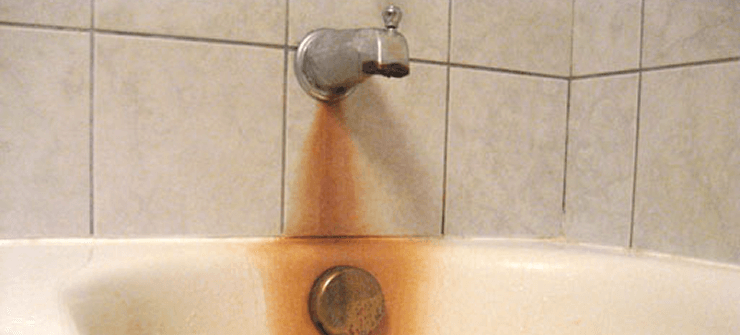Carpets add warmth, style, and comfort to your home—but they’re also magnets for dirt, allergens, and stubborn stains. To extend the life of your carpet, it’s important to follow proper stain removal routines year-round. When your floors start to look a little too “lived in,” you may wonder whether it’s better to clean them yourself or call in the pros. If you’re considering the DIY route, you’re not alone. DIY carpet cleaning has grown in popularity thanks to budget-conscious homeowners and a growing selection of rental machines. But is it the right choice for you?
Let’s break it down.
Why DIY Carpet Cleaning Appeals to Homeowners
For a thorough job, some homeowners prefer to combine DIY with professional services when needed. DIY carpet cleaning can seem like an easy win: lower costs, flexibility, and instant gratification. Here’s why many people reach for a carpet cleaner instead of their phone to call a professional.
Perks of Going DIY
- Save Money
Skip the service fee and pay only for machine rental and cleaning solution. - Clean on Your Schedule
Tackle your carpets when it’s most convenient for you—no appointments necessary. - Quick Response to Spills
Catch stains early before they set with immediate spot treatment. - Satisfying Results
There’s something rewarding about seeing dirty water and knowing you’ve cleaned it yourself.
What You Might Be Overlooking
DIY carpet cleaning isn’t all sunshine and fresh fibers. There are hidden hurdles you should be aware of:
- Limited Cleaning Power
Consumer-grade machines often lack the suction and heat to truly deep clean. - Time-Intensive
You’ll need to clear rooms, prep equipment, and move furniture. - Technique Matters
Over-saturating carpets or using the wrong solution can do more harm than good. - Drying Time
DIY jobs often leave carpets wetter for longer, increasing the risk of mold and mildew.
When Professional Carpet Cleaning Might Be the Smarter Choice
Incorporating carpet cleaning into your regular allergen control schedule can make a big difference. Sometimes, calling in the pros is just worth it. If your carpets are heavily stained or haven’t been cleaned in years, you might need more than a DIY carpet cleaning solution can offer.
Benefits of Hiring a Professional
- Industrial Equipment
High-powered machines extract more dirt and moisture. - Specialized Techniques
Pros adjust their method to suit your carpet type—whether it’s wool, nylon, or polyester. - Faster, More Effective
Professionals can clean an entire home in a few hours with better results. - Added Protection
Many offer stain protection treatments to keep carpets cleaner longer.
Potential Downsides
- Pricey Services
Especially for large areas or deep-clean packages. - Less Flexibility
You’ll have to schedule an appointment and possibly wait days for availability. - Temporary Disruption
You may need to vacate rooms or keep pets and children out during cleaning.
How to Decide: DIY vs. Professional Carpet Cleaning
The right approach depends on several personal factors. Here’s a quick decision guide:
Ask Yourself:
- How dirty are my carpets really?
- Am I dealing with pet stains or odors?
- Do I have the time and energy for DIY carpet cleaning?
- Is this for routine maintenance or a deep restoration?
DIY Carpet Cleaning: Tips for Doing It Right
If you’re ready to roll up your sleeves and do it yourself, here’s how to get the most out of your DIY carpet cleaning day.
Pre-Clean Prep
- Clear the area of furniture and breakables.
- Vacuum thoroughly to remove loose dirt and debris.
- Pre-treat any tough stains with a spot cleaner.
During the Clean
- Follow the machine instructions carefully.
- Don’t over-saturate the carpet—use slow, even strokes.
- Empty and refill tanks as needed to keep the water clean.
Aftercare and Drying
- Increase ventilation with fans and open windows.
- Avoid walking on damp carpet for at least 6 hours.
- Vacuum again once fully dry to lift any remaining fibers.
Must-Have Tools and Products
Here’s a quick list of essentials for successful DIY carpet cleaning:
- Carpet cleaner rental or home machine
- Carpet shampoo or cleaning solution
- Spot treatment spray
- Wet/dry vacuum (optional)
- Fans or dehumidifier for faster drying
DIY Carpet Cleaning Mistakes to Avoid
Avoiding these rookie mistakes can mean the difference between clean carpet and cleaning disaster:
- Over-wetting the carpet
- Using harsh chemicals not made for carpet fibers
- Ignoring the drying process
- Failing to vacuum first
- Skipping a spot test
Pros and Cons at a Glance
Here’s a quick summary to help you weigh your options:
DIY Carpet Cleaning
- ✅ Cheaper
- ✅ Convenient
- ❌ Less effective on deep stains
- ❌ Longer drying time
Professional Carpet Cleaning
- ✅ Powerful equipment
- ✅ Deep, long-lasting results
- ❌ More expensive
- ❌ Less flexible
FAQ: DIY Carpet Cleaning Questions Answered
Q: How often should I clean my carpets?
A: For high-traffic areas, aim for every 6–12 months. Light-use rooms can go up to 18 months.
Q: Can DIY carpet cleaning remove pet odors?
A: Mild odors, yes. But for strong pet urine smells, professional treatment is recommended.
Q: How long does it take for carpets to dry after DIY cleaning?
A: Typically 6 to 12 hours. Boost airflow to speed up the process.
Q: Is DIY carpet cleaning safe for all carpet types?
A: Always check your carpet manufacturer’s care guide. Some materials like wool require special care.
Q: Can I rent a machine instead of buying one?
A: Yes, most hardware stores offer rentals for 24–48 hours.
DIY carpet cleaning can absolutely refresh your floors, extend carpet life, and give you that satisfying sense of accomplishment. Just make sure you’re using the right tools, the right techniques, and realistic expectations. For deeper cleaning jobs, professionals still hold the edge—but routine maintenance is totally manageable with a little effort and know-how.






